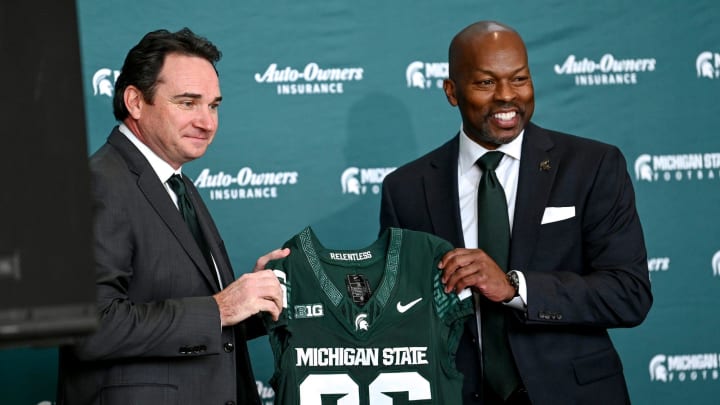The Big Ten is Changing, and Michigan State Football May Have it the Hardest

The Big Ten conference stands on the cusp of a transformative era with the inclusion of four powerhouse teams: UCLA, USC, Washington, and Oregon. This expansion promises not only heightened competition but also a slew of challenges for both new and existing members.
Firstly, the addition of UCLA and USC introduces West Coast football into the traditionally Midwest-centric conference. Teams accustomed to playing in colder climates must now adapt to potentially warmer weather in California, which could influence game strategies and player conditioning. Moreover, the Rose Bowl and Los Angeles Memorial Coliseum provide iconic but daunting venues for visiting teams, presenting a significant home-field advantage for the Bruins and Trojans.
Similarly, Washington and Oregon bring their own unique dynamics to the Big Ten. Teams will contend with the Pacific Northwest's unpredictable weather and face enthusiastic crowds at Husky Stadium and Autzen Stadium. These venues, renowned for their passionate fan bases and challenging environments, will test the mettle of visiting teams unaccustomed to such settings.
From a competitive standpoint, the addition of these teams means Big Ten programs must prepare for unfamiliar opponents with distinct playing styles, coaching philosophies, and recruiting strategies. Coaches across the conference will need to strategize meticulously to counter the strengths and exploit the weaknesses of these new rivals.
Amidst this expansion, Michigan State finds itself at a pivotal juncture under Coach Jonathan Smith's leadership. The Spartans are embarking on a rebuilding phase, striving to reclaim their former glory amidst the intensified competition of an expanded Big Ten. Coach Smith faces the dual challenge of integrating new recruits while also adapting his strategies to confront the diverse tactics of incoming teams.
For Coach Smith and Michigan State, the road ahead is fraught with obstacles. They must navigate the complexities of a revamped conference landscape while revitalizing their football program. The heightened competition within the Big Ten necessitates not only tactical acumen but also resilience and adaptability from every member of the Spartan team.
The future of the Big Ten with the inclusion of UCLA, USC, Washington, and Oregon promises an exhilarating era of college football. However, this expansion brings many challenges — from adapting to new climates and stadiums to strategizing against unfamiliar opponents. For Michigan State and Coach Smith, this evolution demands a renaissance in their approach to football, fostering resilience and innovation in the face of heightened competition.
Don’t forget to follow the official Spartan Nation Page on Facebook Spartan Nation WHEN YOU CLICK RIGHT HERE, and be a part of our vibrant community group Go Green Go White as well WHEN YOU CLICK RIGHT HERE.
